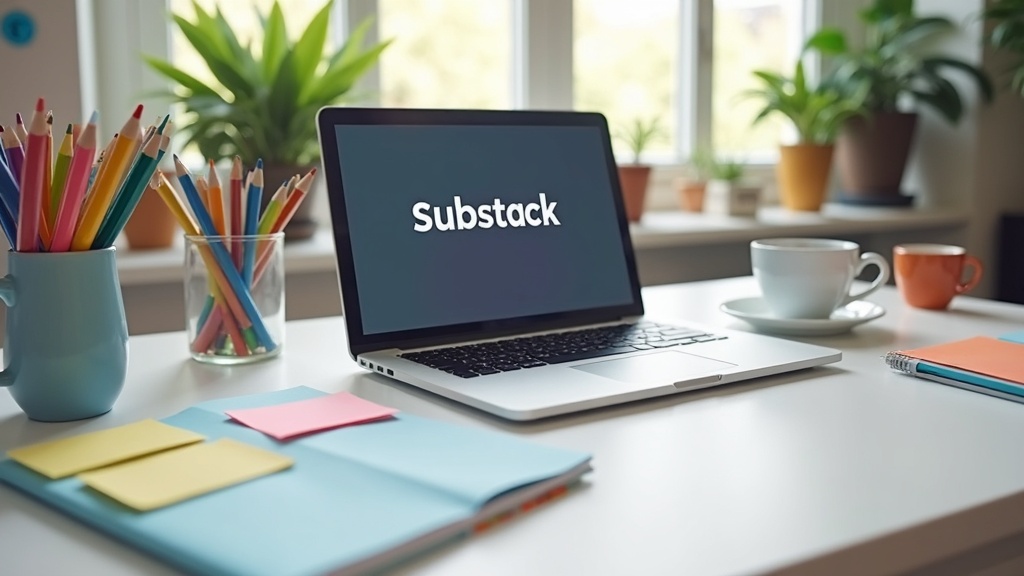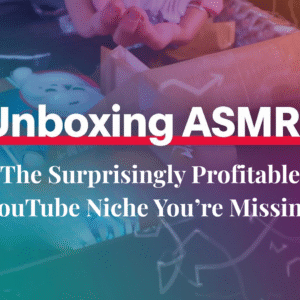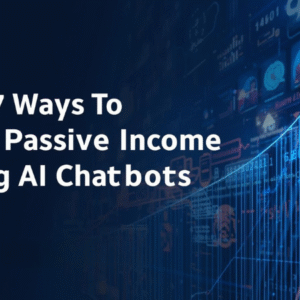Building a thriving Substack isn’t just about sharing what’s on your mind. It’s about unlocking real value with engaging, creative content that brings both loyal readers and new subscribers. I’ve tried more content experiments than I care to admit, and I’ve seen firsthand how the right ideas can increase your reach and bump up your income.
If you’re feeling stuck on what to write, worried your audience isn’t growing, or looking for fresh ways to turn your Substack into more than a digital journal, you’re in the right place. I’m laying out some practical Substack ideas I’ve tried or seen work well, plus proven approaches that make writing enjoyable, not just another chore.
This guide walks through creative Substack ideas that move beyond standard newsletters, shows how to monetize in ways that feel natural, and offers concrete steps for growing your audience and income along the way. You’ll also get a quick action plan, answers to frequently asked questions, a summary of key points, and some resources if you want to dig even deeper.
TL;DR: Creative Substack Ideas That Actually Grow Your List and Earnings
- You’ll find creative Substack ideas that boost subscriptions and income, not just the basics.
- There are practical angles for different niches, whether you’re a writer, coach, artist, or creator.
- Tips on monetization and actionable steps are here, plus answers to common questions.
- Curated resources and tools will help you launch or step up your Substack adventure quickly.
1. Personal Stories With a Unique Spin
People follow Substacks to track down stories they can relate to or learn from. When I started weaving in lessons from my own missteps and the occasional small win, my engagement spiked. Try:
- Lessons Learned: Share mistakes, lessons, or turning points from your real life or business. Don’t just give advice, show how you figured things out.
- Behind the Scenes: Give readers a peek at your creative process, or break down how you develop your ideas, products, or writing.
- Weekly Wins and Struggles: Create a recurring feature that highlights both successes and what didn’t work. It’s honest and keeps readers coming back to see your progress.
Personal stories don’t mean you have to share everything, but being genuine and a little vulnerable is super important. People connect with what’s real.
2. Curated Content & Resource Newsletters
Curation is still underrated. I’ve had readers thank me for finding and sharing the good stuff, especially when everyone’s drowning in content. Try these:
- Top Links Roundup: Compile the best articles, podcasts, tools, or news from your industry. Add your thoughts or short reviews, so readers know what’s worth their time.
- Resource Libraries: Build ongoing lists (like free software, useful books, or top industry newsletters) and update them with each issue. It makes your Substack a go-to hub.
- Community Shoutouts: Highlight members of your audience, clients, or fellow creators and their cool work. This supports networking and keeps people engaged.
Curation shows you’re plugged in, and it builds trust by doing the heavy lifting for your readers.
3. Micro courses and Serial Guides
Instead of one-off tips, step-by-step guides get lots of sharing and bring repeat visits. When I broke down big topics into small, actionable emails over a few weeks, I saw more paid signups and far more replies. A few ideas:
- Mini Email Courses: Teach a skill or topic over five days or five weeks. Think “30 Days to Better Email Habits” or a DIY investment challenge.
- Serial How-Tos: Write multipart series on hot topics in your niche. When something is too big for one post, it becomes a mini-guide that people look forward to.
- Challenge Series: Invite readers to join you on a challenge, like learning a new habit, decluttering, or writing daily for a month and compare results and learn together.
Even if you’re not an expert, just sharing your steps and lessons is super useful to others at a similar stage. You can always find someone who appreciates seeing the process laid out simply and honestly.
4. Exclusive Interviews and Collaborations
Mix up your voice and tap into other audiences by bringing in guests or teaming up on content:
- Q&A with Experts: Interview folks in your field, from authors and tech pros to artists. These posts are easy to share. Plus, guests often help promote them.
- Guest Essays: Let trusted peers write a feature, review, or case study for your newsletter. This brings in fresh perspectives and often new readers.
- Creator Collaborations: Co-author a post with another Substack writer or from another platform. You both get exposure to each other’s audience.
Partnerships are a shortcut to fresh ideas and building your network, not just your list size. Check out collab strategies on Substack if you want more on teaming up.
5. Monetization Ideas That Aren’t Spammy
I’ve tried plenty of ways to make money on Substack, and not all are created equal. Here’s what works and still feels good for your audience:
- Premium Tiers: Put advanced tutorials, in-depth guides, or “insider” resources behind a paid tier, but keep occasional free samples so new readers can get a feel for what you offer.
- Sponsor Spots: Team up with brands, courses, or tools that actually help readers. A short, genuine mention at the end of your newsletter usually works better than aggressive ads.
- Affiliate Offers: Share personal recommendations or reviews for tools you actually use. I like Wealthy Affiliate and CustomGPT.ai since they really give a boost to creator incomes and productivity. Only recommend stuff you’ve tried yourself!
- Services or Consulting: Offer readers direct services, such as coaching, editing, or personalized advice calls. This works, especially when you’ve become a trusted go-to in your niche.
If you respect your community, they’ll stick around and be happy to pay for the real benefits you bring.
More ideas:
General Newsletter Concepts
- The Curated Edit – A weekly roundup of the best articles, tools, or insights in your niche (e.g., productivity hacks, creative writing tips, emerging tech trends).
- The Problem Solver Series – Focus each issue on solving one specific challenge for your readers, whether it’s mastering a habit, improving a skill, or finding inspiration.
- The Deep Dive Digest – Pick one niche (like minimalist living, slow entrepreneurship, or gut health) and explore it consistently through practical, educational, or reflective posts.
- The Update Journal – Revive and refresh old posts or ideas with new insights, lessons, or modern relevance for long-time readers.
- The Behind-the-Scenes Log – Share the real, unfiltered version of your creative or business journey, complete with successes, failures, and reflections.
Community & Engagement-Driven Ideas
- The Creator Conversations – Feature interviews with inspiring voices in your field, from indie creators to niche experts, highlighting their personal insights and stories.
- Ask Me Anything (AMA) Fridays – Dedicate one issue per month to answering subscriber questions or tackling reader-submitted dilemmas.
- The Community Challenge – Run monthly or quarterly group challenges and feature participant highlights.
- Subscriber Spotlight – Showcase community members, share their projects, or tell their success stories to foster connection and loyalty.
- The Roundtable Issue – Collaborate with multiple voices (guest writers or peers) to discuss trending topics or share contrasting perspectives.
Content Formats
- How-To Weekly – Publish step-by-step tutorials or actionable mini-guides within your niche, bite-sized, practical, and easy to share.
- Serialized Stories or Essays – Release a continuing series, fictional or personal, where each post builds on the last, keeping readers hooked.
- The Reflection Diary – A mix of essay and journal-style entries offering introspective thoughts, lessons learned, and personal growth takeaways.
- Expert Breakdown – Simplify complex topics (AI, crypto, marketing, etc.) into approachable insights your audience can actually use.
- The Visual Letter – Use imagery, screenshots, or short videos in your newsletters to create an aesthetic, multimedia experience.
Growth & Monetization Ideas
- Subscriber Exclusives – Offer paid subscribers bonus perks like digital downloads, live Q&A sessions, or access to private communities.
- Creator Collabs – Team up with other Substack writers for cross-promotions, joint issues, or guest posts to expand both audiences.
- Platform Amplifiers – Repurpose snippets from your newsletter into short-form content on LinkedIn, Instagram, or TikTok to drive traffic back.
- Mini-Course or Workshop Launchpad – Use your newsletter to test and promote digital products, courses, or events tailored to your readers.
- The Paid Insights Tier – Offer behind-the-scenes business data, growth stats, or case studies for paying subscribers who want more depth.
Inspiration & Idea Generation
- The Trend Watcher – Stay current with trends in your field and offer analysis, predictions, or “what this means for you” insights.
- Idea Bank Fridays – Share lists of micro-ideas, creative prompts, or inspiration sparks for your readers to act on.
- Conversations Worth Having – Build issues around reader feedback, email replies, or interesting community discussions.
- The Curiosity File – Post spontaneous ideas, random thoughts, or discoveries that inspired you that week.
- Industry Insight Dispatch – Summarize the top 3–5 developments in your niche each month, with quick takeaways for readers.
Niche Substack Ideas That Perform Well
- Money Matters for Creators – Teach freelancers, solopreneurs, or writers how to budget, price, and scale sustainable income streams.
- Wellness for Busy Minds – Simple health and mindfulness practices for creators and entrepreneurs juggling productivity and balance.
- Passion into Profit – A newsletter about monetizing hobbies like photography, journaling, or digital art.
- Marketing Moves That Work – Weekly bite-sized marketing tactics, case studies, or growth lessons with real-world examples.
- The Honest Creative – Personal essays about the realities of building a creative career, authentic, vulnerable, and relatable.
Grow Your Audience: Tactics That Work
- Cross-Promotions: Partner with other writers to promote each other’s work in your newsletters. A simple “If you liked this, check out…” makes a big difference.
- SEO for Substack: Use keywords in your post titles, summaries, and headers (like “substack ideas,” “best business reads,” or “indie writing tips”). This helps your newsletter show up in more Google searches. Learn more at Substack’s SEO Guide.
- Social Media Teasers: Share eye-catching snippets or bold highlights from your latest issue on Twitter, LinkedIn, or Instagram, and invite people to read the full post on Substack.
- Referral Programs: Reward subscribers who invite friends by giving shoutouts, bonus content, or early access to paid material.
Action Plan: Launching Your Next Substack Idea
- Pick an Idea: Choose one of the above, whether it’s storybased content, curation, or microcourses.
- Draft Your First Post: Outline the key points, resources, or stories you want to share. Keep it conversational and real, readers appreciate authenticity.
- Schedule Consistency: Commit to a regular publishing day, weekly or biweekly. It’s better to show up consistently than to flood readers with posts in bursts.
- Promote It: Use SEO-friendly headlines, share highlights on social, and bring a collaborator or cross-promoter on board for extra reach.
- Track What Clicks: Pay attention to open rates, subscriber replies, or link clicks, and repeat what grabs people’s attention.
Looking for a training platform that actually works?
I’ve put together a full walkthrough of the affiliate marketing training that helped me build everything I have today. It’s practical, beginner-friendly, and you can try it out for free to see if it suits you.
Take a look at my honest review and see if it’s the right fit for you.
Turn Your Passion into Earnings
Get the Tools, Training and Support you need. All in One Place
Join a a Vibrant and Global Community of
Marketers and Entrepreneurs from Around the World
FAQs: Growing Your Substack Income & Reach
How often should I publish on Substack?
There’s no single best answer. Weekly or biweekly tends to work for most people. Consistency keeps readers involved. If you have more to share, consider quick bonus updates between your main issues.
Do I have to pick a niche for my Substack?
Starting with a focus helps, but don’t stress over being ultra-specific. Some of the most popular Substacks mix two or three related themes that feel true to the author.
What’s the best way to get my first paid subscriber?
Highlight extra value with bonus guides, deeper stories, or a subscriber-only community. Offering early supporter discounts or limited trial subscriptions can tip people over the edge.
Should I use affiliate links?
Yes, as long as the offers fit your audience and you’re clear about using them. Personally, I only promote tools I use myself, being open about it is always a good move.
Creative Substack Ideas Mean Community and Profit Growth
Building real growth for your Substack is all about trust and bringing unique value to your readers. Don’t just rely on tired newsletter tricks. The more honesty, variety, and personality you add, the more people will stick around and share your work.
I’ve tested everything from curated resource drops to collab posts. In my experience, nothing grows your newsletter like genuine connection with your readers. When you put some personal touch into your work, it matters, even if your topic is technical or business-related.
If you’re motivated to take your Substack up a notch, try one creative idea for your next issue. Or check with your subscribers and see what they want more of.
What’s the most out-of-the-box Substack idea you’ve seen or put to the test? I’d love to hear about your experiments, wins, or lessons, share them in the comments and let’s swap stories!
Let’s make it happen!




